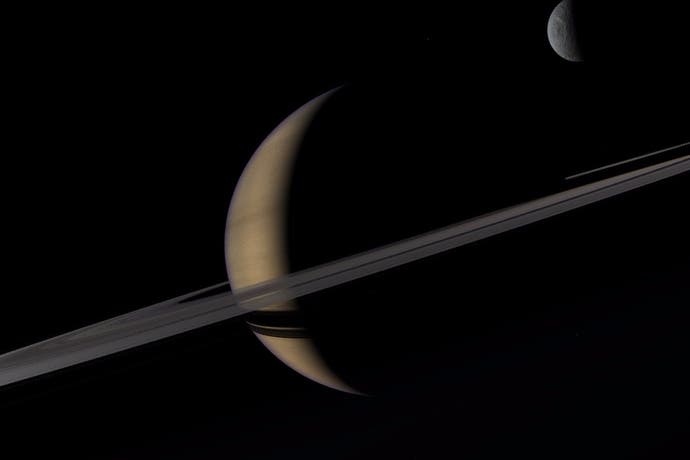What it's like to explore the Solar System in virtual reality
All these worlds are yours.
If you absolutely had to go, you could go out with less flair than this: dropping down from the radioactive vacuum and into the furious embrace of VY Canis Majoris, a star so big as to be a little bit implausible, really. As deaths go, it would be a touch ostentatious, but who cares? VY Canis Majoris is a touch ostentatious. I would give you the stats and the measurements, but they wouldn't really mean anything. You know our sun? It's quite big, isn't it? VY Canis Majoris makes our sun look very, very small.
I think this is perfect for VR. Titans of Space 2.0 is perfect for VR. A grand tour of the solar system and beyond. It genuinely feels like a grand tour - and they aren't lying about the beyond part, either. You start above Earth, the scale all mashed up so that a huge wall of yellow light rises over the planet, and turns out to be our very own sun. Next off to Mercury, then Venus with its mysterious shroud of clouds. Mars, looking a bit like an old friend by this point, and then Ceres, the only one of the four forgotten ex-planets of the asteroid belt that anybody really cares about anymore, probably because we visited fairly recently. That's the nice rocky planets all done with, and then Jupiter, seething bands and angry spot, looms out of the darkness.
Cor, Jupiter is big. Its center is possibly a diamond. Its history is possibly that of a failed star. How many moons has it got? Over 60 at last count, but really, sat in the small cockpit of Titans of Space 2.0 it's the sheer bigness of Jupiter that gets to you. It's got a noble bulk, rimmed by darkness, and the tour takes you in close for a kind of slingshot move. And behind it, the rings of Saturn, and behind that, Uranus, a vast mint-coloured pearl of a world with delicate rings of its own, glittering in the light. Uranus looks so fragile, and then Neptune's filling your view, and beyond it not just Pluto, but Eris, my favourite, with its tiny moon Dysnomia. We know what Pluto looks like now, and astonishingly, its heart-shaped birthmark has made it into Titans of Space 2.0. But it just makes me a bit greedy: I want to know what Eris looks like. I want to know about Makemake.
The solar system is not really done by this point - it actually reaches around two and a half light years out, I think, which, when you take into account the 4.25 light year journey to Proxima Centauri, makes it feel like we live in the elbowy suburbs of the Milky Way, backyards shoved up against backyards. But Titans of Space is done with the solar system. Back to the sun, and now something new looms behind it, something vast and terrifying: it's time to compare stars.
Comparing stars is quite scary, I think. They're just so huge, and in the private theatre of a VR headset, the hugeness fills the same space that you do. It feels like a privilege to be able to learn about the universe in this way, with this glorious sense of scale, of our own plucky inconsequence. I want bigger suns, greater distances, I want to pull back and disappear into the darkness, and then swoop in close to see the flames.


